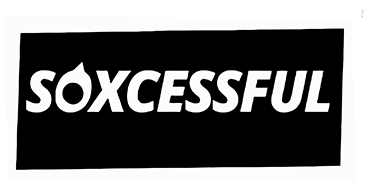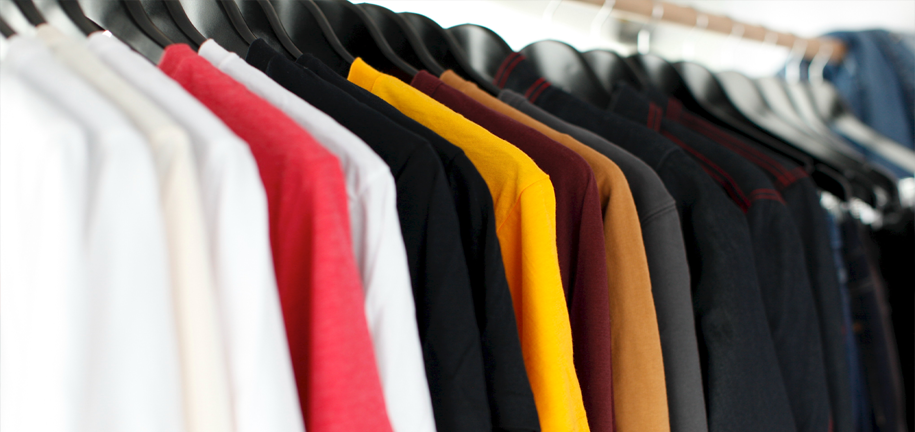Torn, stained, full of holes —whatever it is, you just can't bring yourself to throw it away. A lot of us use our favorite T-shirts as a form of self-expression. (And they serve as free advertising for many in the business world!).
They're a comfortable, versatile, and casual wardrobe staple. A custom T-shirt, therefore, is the best place to start if you've ever considered designing your own branded merch or your own clothing.
There are countless reasons why you might want to design your own T-shirt. It could be used to boost team morale within your organization, to give as a gift, to commemorate a special event (like family reunions), or even be sold on your online store.
With research from BrandSpeed showing that 57% of customers think highly of companies that gave them a free T-shirt, branded shirts can also be a very effective marketing tool.
Whatever your goal may be, designing a custom T-shirt doesn't have to be a difficult process or pricey. Keep in mind that T-shirt design basics never changed: what you do with it is what matters.
Read more to learn easy steps in making your custom T-shirt project a success!
The 8 steps to T-shirt designing
- Consider why you need a T-shirt
- Set your budget based on quantity
- Find out your printing options
- Build your design concept
- Pick a designer
- Assess your design
- Choose the right files
- Look for a brilliant printer
1. Consider why you need a T-shirt
Branding is your primary goal if you're using T-shirts for advertising reasons. And even if it's simply fashion, you still need to incorporate consistent brand themes into all of your products.
If you're using it for personal purposes, such as celebrating an occasion, be sure your shirt design communicates clearly.
If you haven't done so already, make a list of the trends, central themes, and specific traits that you want your brand and T-shirts to represent. Is your brand playful or serious? Conservative or edgy? Expensive or modestly priced? In a single glance, a focused T-shirt design can satisfy all these questions.
Move away from your personal preference and depend more on actual, quantifiable data to arrive at the best design. Who are your target customers/clients? What brand characteristics do they want have business with?
The four essential goals that will drive your design process (and help you understand why you need a shirt and what you'd like to do with it) are:
⁄ Internal company use
⁄ Sales promotions
⁄ Merchandise
⁄ Event tokens
2. Set your budget based on quantity
To help focus on your design better, let's settle a few concerns first: your budget and quantity. These will hugely impact your design.
How many colors you can use, for instance, will depend on budget and quantity. Additional colors might increase printing cost, depending on the printing method. Conserving color is a good way to cut costs if your budget is tight.
Your printing method will also depend on how many shirts you need. Some methods are perfect for bulk printing while some are more expensive per shirt and, therefore, best for small orders. So plan your budget and number of shirts before you start thinking about designing or printing.
3. Study your printing options
Materials, production time, appearance, and cost are all important to consider when looking for the perfect T-shirt printing method. The more you know about each method, the simpler it will be for you to choose which is best for you.
Screen printing
This is the industry standard for shirt printing.
For bulk orders of screen printing, your printer creates original screens of your design —one for every color.
Pros: Reliable printing standard. Superb quality and affordable. Ideal for bulk orders of more than 20.
Cons: For every change of color or design, a new screen is required (which gets costly). Designs with more colors tend to be more expensive.
Vinyl graphics
Vinyl printing is a heated transfer technique that uses more durable vinyl, instead of just ink.
Pros: Highly durable and superior quality. Ideal for making a statement with your design.
Cons: Complex designs mean more cost as more colors are added to the mix. Not the best for big orders.
Direct-to-garment
DTG printing (or print-on-demand) is a more recent option that uses the versatility of inkjet printing, but directly prints on fabric.
Pros: Designs that are highly customizable and offer a wide range of color options.
Cons: Use for single samples or perhaps small batches. It becomes less viable as you print more. Doesn't work well on clothes with dark colors.
4. Build your design concept
So here's the exciting part... you start defining what will actually be printed on your shirt! Be sure not to jump right into this step. The more effort and time you put into getting ready for this, the better.
There are countless possibilities for your design. Here are some ideas to help you focus your creativity as you brainstorm.
Style & imagery
In order to convey the message you want to say, you must rely on your artistic and creative instincts at this stage. Remember these questions:
⁄ Who is your market?
⁄ What's your brand?
⁄ Why are you designing a shirt to begin with?
Once all these are put together, you're ready to begin designing the perfect shirt for you.
Plus, keep in mind that your design will be worn on bodies —ranging from lumpy, clumsy forms to slim, lanky ones —most are not perfectly symmetrical. Since you can't predict where the nooks and crannies will be, consider simple, flat designs. For the same reasons, you should also stay away from detailed imagery, like intricate linework and subtle color gradients.
T-shirt types
It's easy to overlook the fact that there's a wide variety of shirt types. To name a few: V neck, crew neck, crop top, Henley Y-neck, polo shirt, sleeveless, 3-quarter sleeve, slim fit, baggy, etc.
So before choosing the right type of shirt, consider your target audience and intended goals. Make sure your ideas for T-shirt designs translate to actual size before you begin sketching them out.
Create designs on an 18"x18" canvas, then physically transfer them to shirts. You can achieve the right proportions by using a canvas that is realistically sized. With your final design on hand, think about how it will appear on smaller and larger shirt sizes.
T-shirt typography
Your choice of fonts reveals a lot about your brand.
Script fonts and serif fonts have a more classic appearance. Sans-serifs add a modern touch.
Shirts offer a greater opportunity than any other graphic design mediums to play with wild, fun display fonts, but keep readability in mind. If they're crucial to conveying your message, make sure the words on your shirt don't get lost in grungy, swirly, or loopy typography.
Color in T-shirt design
Color is the component of design that best conveys personality instantly.
Two sets of colors should be considered when designing shirts: the print color(s) and the fabric color(s).
Always use the color of your chosen fabric as backdrop for your design concepts to make sure these two go well together. (Take note that a colored canvas may affect how inks appear, so be sure to discuss this with your printer. Your "teal" might not match their "teal".)
Niche printing techniques
Shirts can be printed on with a variety of ink options, just like any other printing medium. Choices include: foil, plastisol, novelty, gel, high-density, and water-based.
5. Pick a designer
There are two routes to find a designer who best fits your needs: DIY route and hiring a pro.
The main advantage of opting for DIY is the cost. This is best when you're on a tight budget. Design freedom is a huge plus, too. But if we mention acronyms like CMYK and you're absolutely clueless, you're better off handing it over to a pro.
Instead of self-learning graphic design, marketing and branding, why not pay someone who knows all three well?
It can be trying working with a freelancer, but also a lot of fun! Find a designer who understands what you need and shares your perspective. Consider their design style, expertise, and personality. Once you've identified your designer, you need to communicate your vision clearly. Give them all they need to know so you'd get the perfect design.
6. Assess your design
As your design choices roll in, look through each version and pick your favorites. Keep in mind your technical and marketing requirements: Is the color grade within your budget? Does your design fit a tank top? Is the message precise? This is a business decision more than an art competition. Clearly express your feedback to your designer so that your next set of options looks even better. Then, run it by people who aren't connected to what you're doing to get a third-party perspective. Ask them:
⁄ Who is this shirt meant for?
⁄ What’s the main message you're getting from looking at this shirt?
Their answers will advise you if your shirt is communicating your intended message.
7. Secure the right files
Make sure you get these files from your designer:
⁄ Color codes (i.e. Pantone or CMYK codes)
⁄ Vector format of your shirt design (i.e. PDF, EPS, Adobe Illustrator files)
8. Look for a brilliant printer
Once your design is done, it's time to print! Find a printer that offers the technique you need at a cost you can afford. Of course, discounts and extra features sweeten the deal. Most often than not, it takes time and experience sifting through printing options before you can find the best fit for your project.
But Soxcessful is going to fast-track it for you!
Learn more and see how we can customize for you! We make it simple and easy.
Go ahead and start your T-shirt project with Soxcessful!







